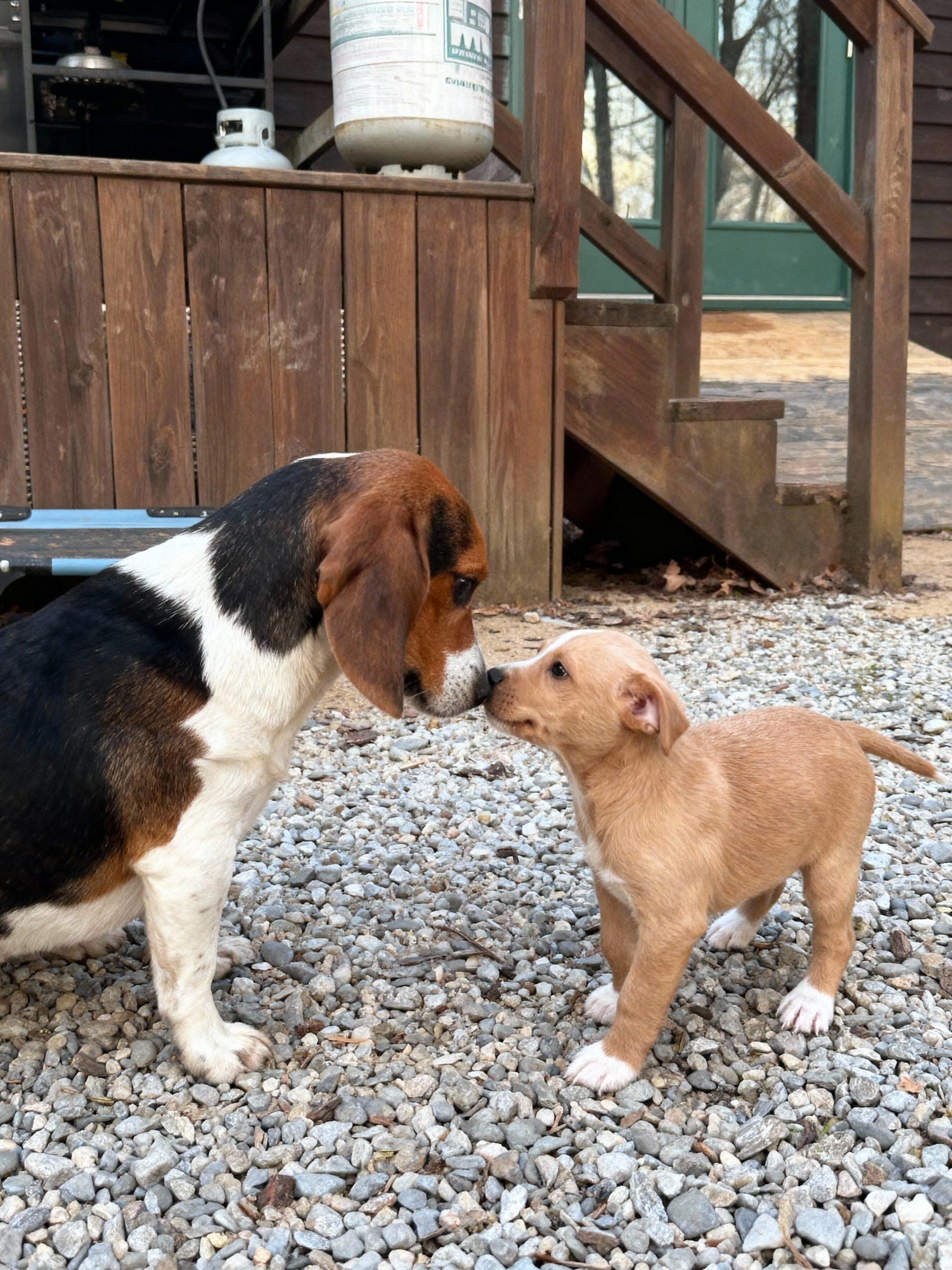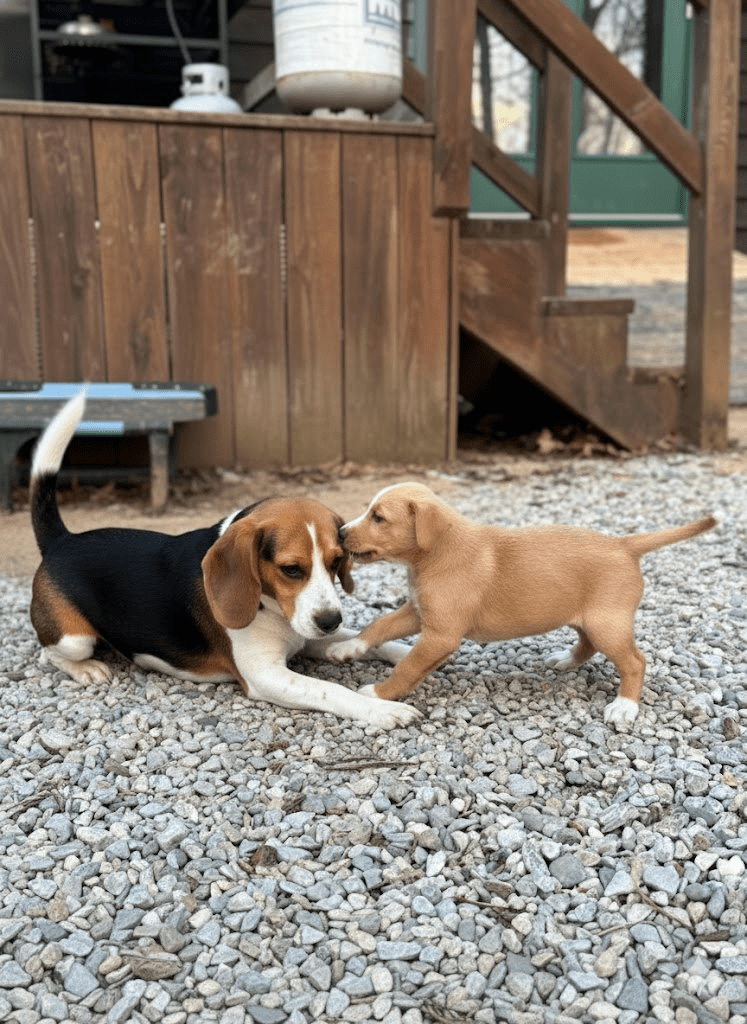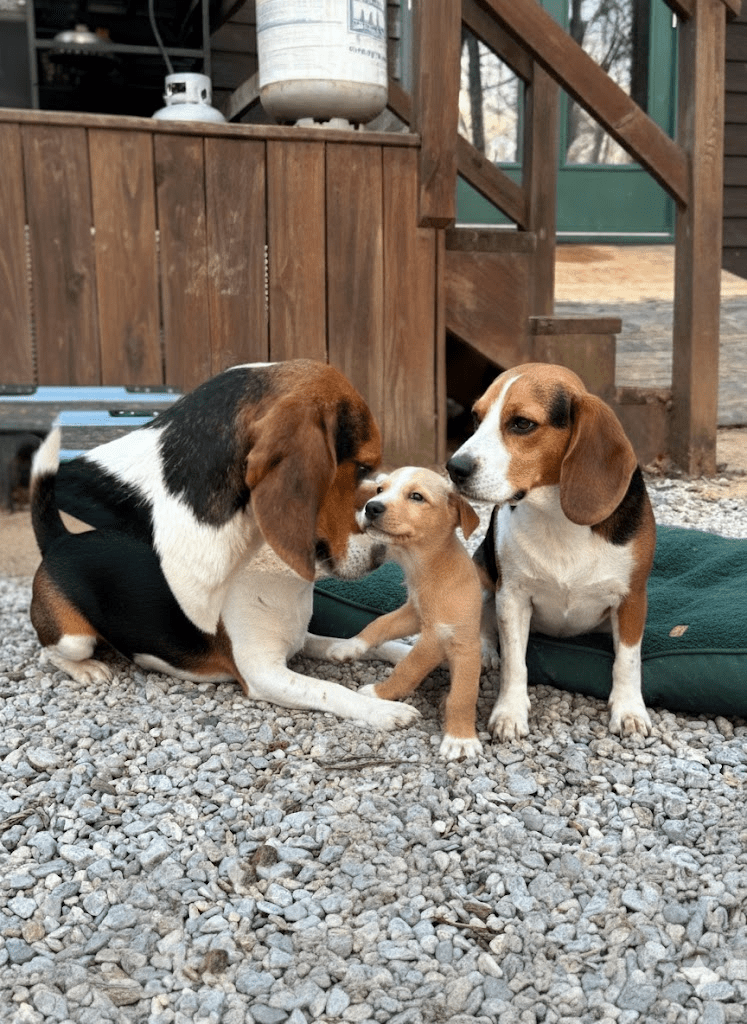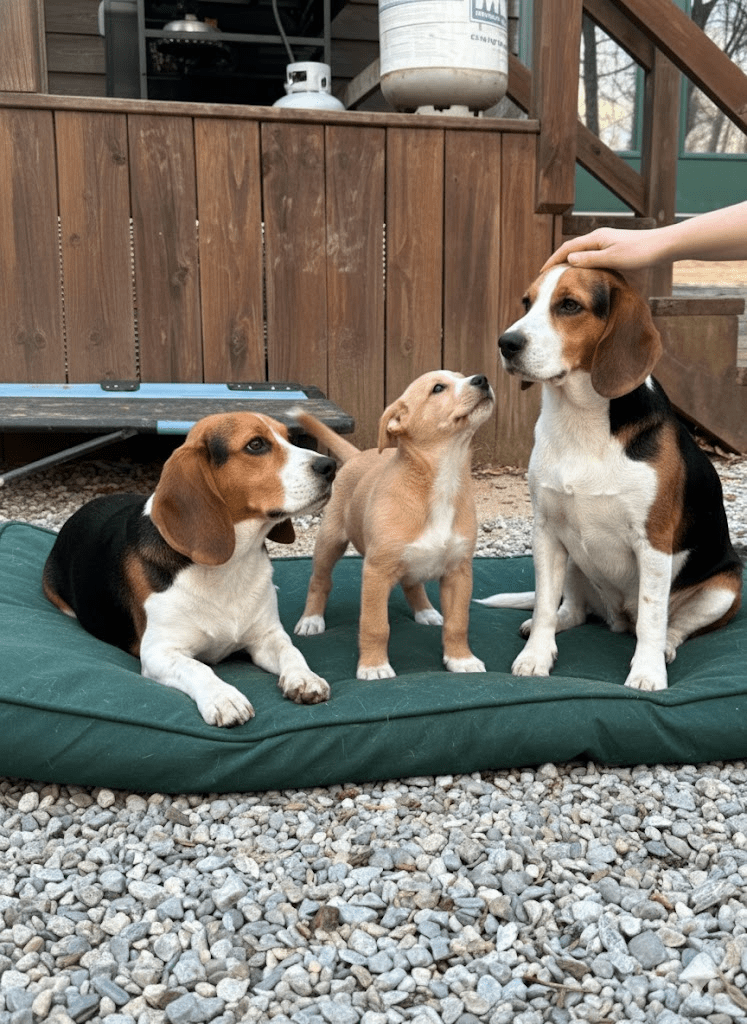In the silent, yet profoundly expressive world of canines, a single gesture can speak volumes, transcending differences in breed, size, or age. The accompanying image captures such a moment—a tender nose-to-nose greeting between an older, tri-color beagle and a curious, fawn-colored puppy. This intimate interaction, set against the rustic backdrop of a gravel path and a wooden deck, is more than just a fleeting exchange; it’s a window into the intricate social dynamics and emotional depth that characterize our beloved canine companions. The beagle, with its gentle demeanor and knowing gaze, appears to be initiating a moment of connection, perhaps a silent acknowledgment of the puppy’s presence, an invitation to play, or even a subtle act of reassurance. The puppy, still in the nascent stages of exploring its world, responds with an equally open posture, its small snout tentatively reaching out, mirroring the older dog’s gesture. This image encapsulates the essence of canine communication—a rich tapestry woven from scent, touch, and subtle body language, revealing the profound capacity dogs have for forming bonds, expressing empathy, and establishing their place within a social structure. It invites us to ponder the unspoken narratives that unfold daily in the lives of our pets, reminding us that beneath their playful antics and loyal companionship lies a complex emotional landscape waiting to be understood and appreciated.

The Nuances of Canine Greetings
The nose-to-nose contact observed in the initial image is a fundamental aspect of canine social interaction. For dogs, their sense of smell is paramount, acting as a primary tool for gathering information about their environment and each other. A nose-to-nose greeting allows dogs to exchange critical olfactory data, enabling them to identify individuals, assess their emotional state, and even discern recent activities. This initial exchange is often followed by a more comprehensive sniff around the head, flank, and anal regions, which provide a wealth of information. The beagle’s gentle approach, in particular, demonstrates a respectful and non-threatening gesture, crucial for establishing trust, especially with a young, impressionable puppy. This form of greeting helps to establish social order and mutual understanding within a pack or between individual dogs. It is a ritual that reinforces bonds, communicates intentions, and sets the stage for further interaction, whether it be play, companionship, or simply coexistence. Understanding these nuances helps us appreciate the sophistication of canine communication, moving beyond simplistic interpretations of barks and tail wags.

Mentorship and Early Socialization
The interaction between the beagle and the puppy also highlights the vital role of older, more experienced dogs in the socialization and development of younger canines. Just as human children learn through observation and interaction with adults, puppies absorb crucial social cues and behavioral norms from their older counterparts. The beagle, by engaging in a calm and affectionate greeting, is effectively modeling appropriate social behavior for the puppy. This early exposure to positive canine interactions is instrumental in shaping the puppy’s future temperament and its ability to interact harmoniously with other dogs. Puppies that receive adequate socialization during their critical developmental period, often facilitated by encounters with well-adjusted adult dogs, are more likely to grow into confident, friendly, and well-behaved adults. Without such guidance, puppies can develop fear or aggression towards other dogs, leading to behavioral challenges later in life. The image, therefore, serves as a poignant reminder of the natural mentorship that often unfolds between dogs, a process that is both beautiful and essential for healthy canine development.

The Role of Body Language in Canine Communication
Beyond the direct nose-to-nose contact, the subtle body language of both dogs in the image conveys a wealth of information. The beagle’s lowered head and gentle lean suggest an absence of threat, inviting the puppy to approach without fear. Its overall posture appears relaxed, with no signs of tension or aggression, such as stiff body language, direct stares, or raised hackles. The puppy, in turn, exhibits a curious yet submissive stance, its body slightly angled and its gaze directed towards the beagle’s face, indicating respect and a willingness to engage. The position of their tails, while not fully visible, would also provide additional cues, with a relaxed, wagging tail typically signaling friendliness and contentment. These non-verbal signals are critical in canine interactions, serving as a complex system of communication that minimizes conflict and fosters social harmony. Learning to interpret these subtle cues allows human observers to better understand their dogs’ emotional states and intentions, facilitating a deeper connection and more effective communication between species.

Interspecies Bonds and Affection
While the immediate focus is on the interaction between the two dogs, the overall setting hints at the presence of human caretakers, further underscoring the interconnectedness of our lives with those of our pets. The well-maintained gravel path and the wooden structure in the background suggest a domestic environment where these animals are cherished members of a family. The affection shown between the beagle and the puppy is often a reflection of the positive and loving environment they inhabit. Dogs are remarkably adept at forming bonds not only with their own kind but also with humans, often mirroring the emotional cues they receive from their human companions. This capacity for interspecies affection is what makes dogs such integral parts of our lives, offering unconditional love, companionship, and emotional support. The image, therefore, is not just about two dogs; it’s about the universal nature of affection and the powerful bonds that can form across species, enriching the lives of both animals and humans alike.







